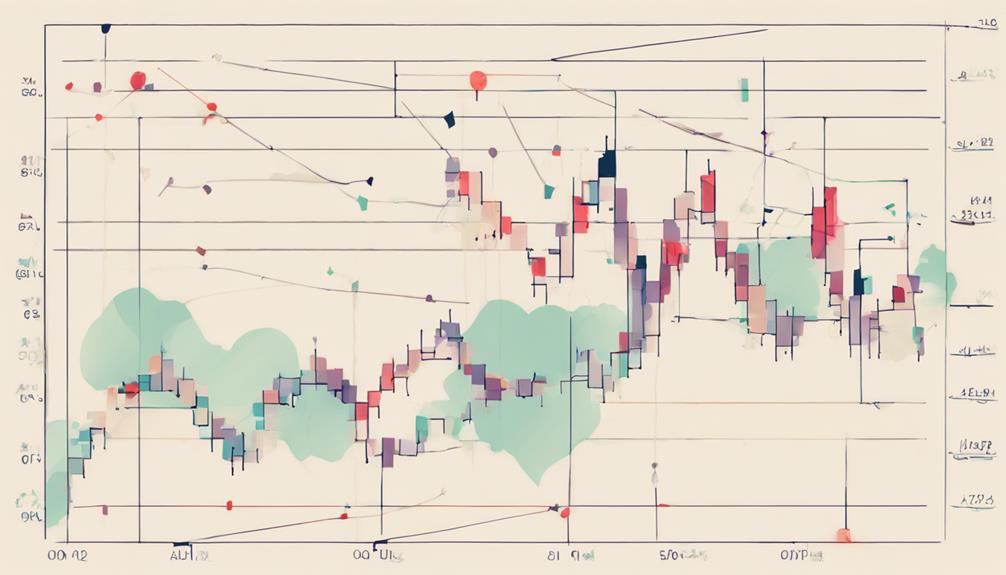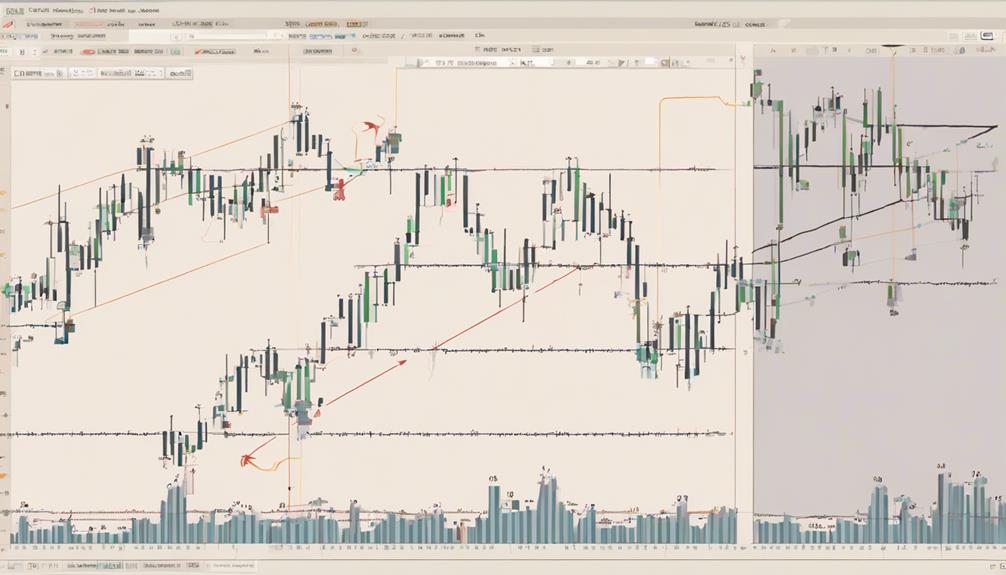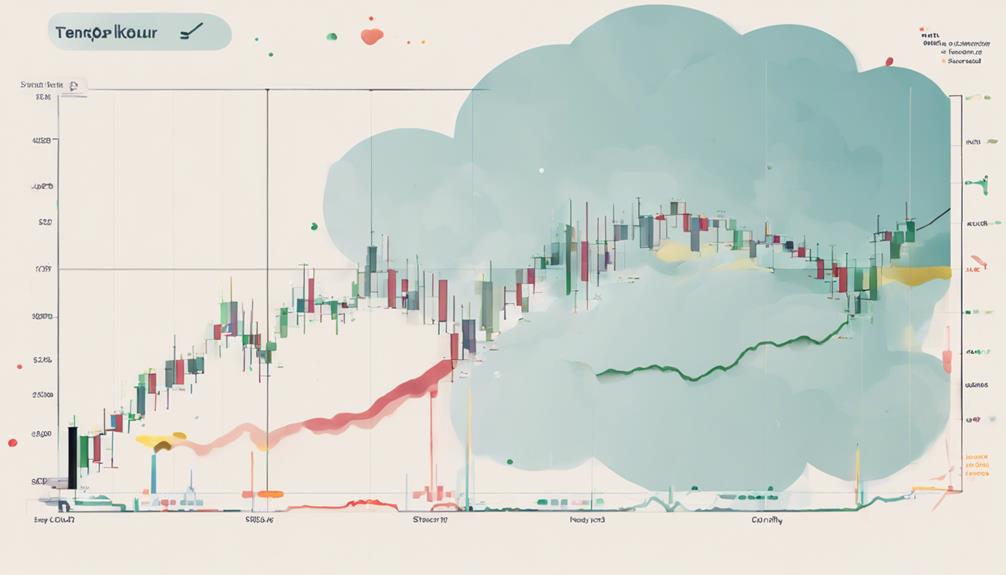If you've ever wondered how traders anticipate market trends and pinpoint entry and exit points with precision, then the Beginner's Guide to Ichimoku Cloud Indicator is just what you need.
Imagine being able to identify potential trade opportunities by simply analyzing a single chart. This powerful tool has been gaining popularity among both novice and experienced traders for its ability to provide a comprehensive view of the market dynamics.
Understanding the basics of the Ichimoku Cloud can be a game-changer in your trading journey, offering a structured approach to decision-making that goes beyond traditional technical analysis methods.
Key Components of Ichimoku Cloud
The key components of the Ichimoku Cloud indicator provide essential insights into market trends and potential price movements. The Ichimoku Cloud is a comprehensive trading indicator that includes various lines and spans.
The Conversion Line, known as Tenkan-Sen, and the Base Line, called Kijun-Sen, offer dynamic support and resistance levels based on historical price data. The Senkou Span B, projected 26 periods forward, helps traders identify potential future price movements and acts as a leading indicator.
Understanding these components is crucial for utilizing the Ichimoku Cloud effectively in your trading strategy. By analyzing the interplay between these lines and spans, traders can make informed decisions about market trends and possible entry or exit points.
Understanding Ichimoku Formulas

To comprehend the Ichimoku Formulas effectively, focus on the intricate calculations underlying each component. The Conversion Line is derived by averaging the highest high and lowest low over the last 9 periods, while the Base Line is calculated by averaging the highest high and lowest low over the past 26 periods.
Leading Span A is the average of the Conversion Line and Base Line plotted 26 periods ahead, and Leading Span B is the average of the highest high and lowest low over the previous 52 periods plotted 26 periods in the future.
The Lagging Span represents the current closing price plotted 26 periods in the past. These calculations are fundamental in Ichimoku Cloud analysis and play a crucial role in technical analysis.
Interpreting Ichimoku Cloud Signals

Interpreting Ichimoku Cloud signals reveals valuable insights into market trends and potential trading opportunities. Here are key points to consider:
- Identifying Trends: The Cloud's position relative to the price indicates trend direction and momentum.
- Dynamic Support and Resistance: The Cloud acts as dynamic support in uptrends and resistance in downtrends, aiding in setting entry and exit points.
- Trade Signals: Bullish momentum is signaled when the price is above both Conversion and Base lines, while bearish momentum occurs when below.
- False Signals: Be cautious of false signals that may occur during ranging markets, where price oscillates around the Cloud.
Ichimoku Cloud Vs. Moving Averages

Comparing the Ichimoku Cloud indicator to traditional moving averages reveals distinct differences in their calculation methods and the depth of information provided on market support and resistance levels. The Ichimoku Cloud incorporates highs and lows in its calculation, offering a more comprehensive view of support and resistance levels compared to moving averages based solely on closing prices.
While both Ichimoku Cloud and moving averages provide insights into trend direction, momentum, and support/resistance, Ichimoku Cloud stands out for its unique approach. By combining Ichimoku Cloud and moving averages, traders can gain a more holistic understanding of market conditions and potential trading opportunities.
Understanding these distinctions can enhance your technical analysis toolbox, allowing for more informed decision-making in various market scenarios.
Tips for Using Ichimoku Cloud

Considering the dynamic nature of the Ichimoku Cloud indicator, mastering its application involves utilizing key strategies and techniques for optimal effectiveness in your trading decisions.
Here are some tips for using Ichimoku Cloud:
- Use the Conversion and Base lines to identify short-term trends and momentum shifts.
- Consider the Cloud as dynamic support and resistance levels for trade entry and exit points.
- Look for crossovers between the Conversion and Base lines for potential trend reversal signals.
- Combine Ichimoku Cloud with other indicators like RSI for more robust trade confirmation.
Is the Beginner’s Guide to Ichimoku Cloud Indicator Comprehensive Enough for a Beginner to Understand?
The beginner’s guide to Ichimoku Cloud indicators is comprehensive enough for a beginner to understand. It provides a clear and thorough explanation of how to interpret the best Ichimoku Cloud indicators, making it easy for newcomers to grasp the concept and start using them effectively.
Frequently Asked Questions
What Is the Best Indicator for Ichimoku Cloud?
For Ichimoku Cloud, the best indicator is the Chikou Span. It confirms trend direction by comparing current price to historical movement. Validate signals from other components like Conversion Line and Base Line for stronger trades.
What Is the Basic Ichimoku Strategy?
When trading with the basic Ichimoku strategy, you identify trends by observing the Conversion Line and Base Line. A bullish trend is signaled by the Conversion Line crossing above the Base Line, while a bearish trend is the opposite.
How Do You Use Ichimoku Indicator?
To use the Ichimoku indicator effectively, analyze crossovers and Cloud positioning for buy/sell signals. Consider the Conversion Line, Base Line, and Cloud projections. Utilize this tool for trend analysis and to identify potential support/resistance levels.
How to Study Ichimoku Cloud?
To study Ichimoku Cloud, start by analyzing its key components: Conversion Line, Base Line, Lagging Span, Leading Span A, Leading Span B, and the Cloud. Use these elements to interpret trend direction and support/resistance levels effectively.
Conclusion
As you navigate the intricate world of trading, the Ichimoku Cloud serves as a guiding light, illuminating the path to potential profits. Its five key components act as pillars of support, offering clarity in a sea of uncertainty.
By mastering its formulas and signals, you can harness the power of this indicator to make informed decisions and stay ahead of the curve. Embrace the Ichimoku Cloud as your beacon in the fog of trading, guiding you towards success.


